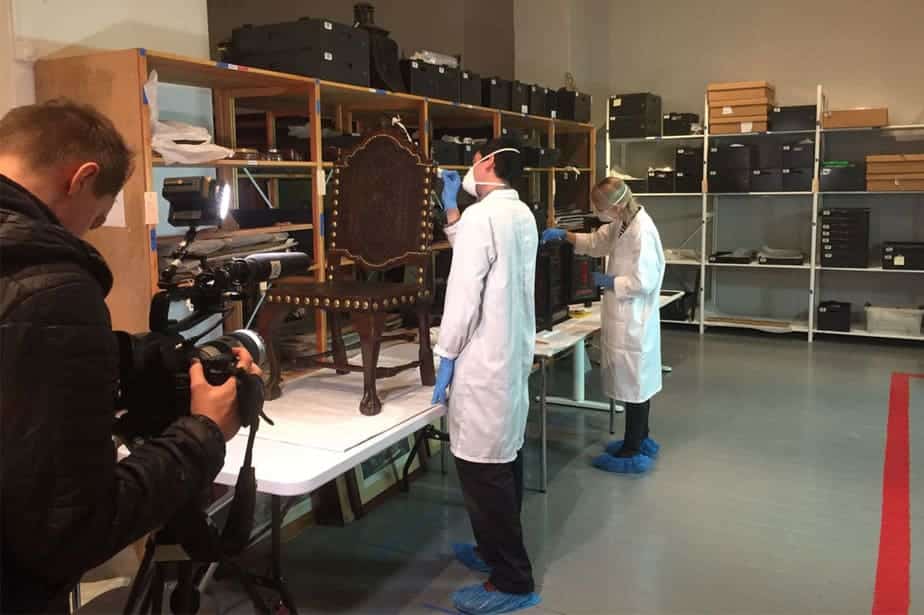Plowden & Smith has sent a team of four conservators out to Norway to take on a major project for the KODE Art Museums and Composers Homes, in collaboration with the Norwegian Institute for Cultural Heritage Research (NIKU). The project will last for nearly 3 months.
The KODE Art Museums and Composer Homes is one of the largest museums for art, craft, design and music in the Nordic countries. Its team cares for almost 50,000 objects ranging from paintings, works on paper, sculptures, installations, videos, musical instruments, furniture and works of fine craft and design.
Following major building work, construction dust had coated a substantial number of artefacts in the museum collection, including large items of furniture, paintings, ceramics, metal work and contemporary art. In essence, our brief was to conservation clean almost 1000 objects to safely rid them of corrosive and abrasive concrete construction dust.
Dust usually comprises soil, pollen, a good amount of skin and general debris. However, the composition of dust varies: for example, in a museum located in the centre of the Norwegian city of Bergen, one would expect dust to contain slightly higher levels of pollutants, reflecting the fact that cities tend to have higher levels of C02 emissions, as well as a higher rate of skin particles and clothing fibres from the thousands of people that visit the museum each year.
For this particular conservation project, which came to us via leading insurers Hiscox, we were specifically treating dust caused by building work to the museum. Concrete construction dust is not only very abrasive, but is also alkaline, which means that the particles can become corrosive if a chemical reaction is enabled through the presence of moisture. Removing the dust is essential to prevent permanent degradation to the surface of objects, and also highlights why controlling humidity levels to prevent a build-up of moisture is such a key part of object conservation. To complicate matters, concrete construction dust can contain a high silica content: exposure to which can cause permanent damage to lungs and airways.
Health and Safety is always important in any project we carry out. For this project, all the team were provided with personal protective equipment, which included half-face respirators, goggles, in addition to the nitrile gloves we usually wear when handling and treating objects.
Avoiding the spread of dust particles to other parts of a building is always a challenge. However, in the case of particularly harmful dust, special precautionary measures were taken to avoid the cross contamination of dust to clean areas of the museum. Shoe covers were worn, and the objects were cleaned inside a sealed ‘tent’ with conservation grade Vacuums with hepa filters and the dust being brushed directly into the vacuum nozzle.
Dust was removed with an array of soft brushes including those of badger hair and also polyurethane sponges. The newly cleaned artefact was then transferred into a clean zone, placed on a pallet and covered with Tyvek.
Documentation was extremely important and we have been fastidiously documenting all items on a spreadsheet, with a brief description of condition and whether any further conservation treatment is required.
So far the project has proved extremely interesting: we have enjoyed working in close collaboration with the KODE museum staff, not to mention enjoying a visit from Norwegian television.
To find out more about our conservation cleaning services, or to discuss a project, please get in touch.

